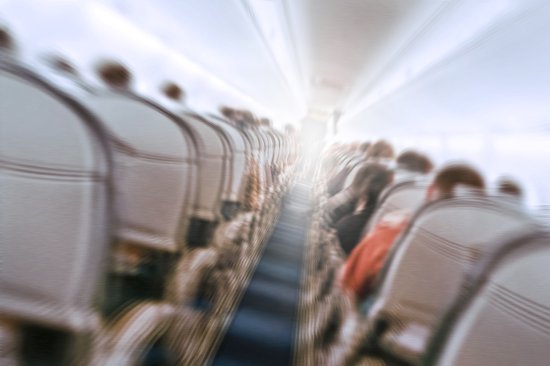
An Air Europa flight bound for Uruguay had to emergency land in Brazil so dozens injured by turbulence could be treated.
Dozens aboard an Air Europa flight from Spain to Uruguay on Monday were injured from severe turbulence, and the plane was forced to make an emergency landing in Brazil, marking the second such mid-air crisis since May to make international headlines and see harrowing images make the rounds on social media.
The Spanish airline, in posts on X, said its Flight UX045 bound for Montevideo was diverted to Natal, Brazil, so that passengers who had been injured could be quickly treated.
[time-brightcove not-tgx=”true”]At least 30 people among the over 300 passengers on board were injured, Brazilian media reported, citing local officials. At least one passenger reportedly suffered fractured ribs, while Natal emergency medical services said others suffered cervical fractures, facial injuries, and chest pain.
Photos and videos, which TIME is unable to verify, believed to be of the aftermath of the turbulence show broken ceiling panels and seats in the plane and ambulances parked on the tarmac to receive injured passengers.
There is also footage circulating of a person apparently stuck above an overhead compartment, with their feet sticking out, as well as of what appears to be the same person later dislodged by fellow passengers.
“A person was left hanging between the plastic roof and the metal roof that is behind it, and they had to be brought down. The same thing happened to a baby,” Evangelina Saravia, a passenger, told Spanish-language news channel Telemundo. She added that, after passengers were warned of turbulence and told to fasten their seatbelts, they experienced about 20 minutes of “minimal” turbulence. But as people started relaxing, walking around or sleeping without seatbelts, “it was like we entered an air well.” Another passenger told Telemundo that the cabin was filled with screams and the smell of blood.
The accident aboard Flight UX045 comes just weeks after a Singapore Airlines flight was similarly disrupted by severe turbulence on May 21, forcing the aircraft flying from London to Singapore to emergency land in Bangkok. Dozens were hospitalized—including with brain and spinal cord injuries—and one man died of a suspected heart attack.
Read More: Investigation Reveals Terrifying Five Seconds in Timeline of Turbulent Singapore Airlines Flight
Understanding turbulence and its risks
Turbulence refers to irregular air movement caused by a range of factors, such as jet streams, thunderstorms, or hot weather—when the earth’s varied surfaces, ranging from sand to grass to water, are heated unevenly by the sun, the rising of warm air and descending of cool air creates convective currents.
At high altitudes, planes can run into clear-air turbulence, which is dangerously invisible to the eye and to radars, often striking with no warning. “You obviously can’t see it. But when you hit it, it’s an abrupt drop,” a former pilot told Mashable of what clear-air turbulence feels like.
Depending on its severity, the effects of turbulence can range from slight bumpiness to structural damage to the plane.
According to the U.S. National Center for Atmospheric Research, about 65,000 flights in the U.S. experience moderate turbulence in a year, while about 5,500 experience severe turbulence.
Read More: These Are the World’s Busiest Flight Routes and Airports
But despite the recent headlines, injuries are actually quite rare. According to the Federal Aviation Administration, which oversees the flight travel of millions of passengers every day, 163 people, including crew members, suffered serious injuries (defined as hospitalization for over 48 hours, fractures, severe hemorrhages, or burns) from turbulence from 2009 to 2022.
Whether from wear and tear to aircraft, flight delays, or injuries—turbulence is estimated to cost the U.S. aviation industry between $150 to $500 million annually.
Things are likely, however, to get worse.
Scientists have found that warming air temperatures from climate change have exacerbated turbulence: the annual duration of severe turbulence has increased by 55% over the last 40 years, with the North Atlantic charting the biggest increases.
Responding to turbulence
Aviation companies have their own protocol to ensure safety when dealing with turbulence. Airbus recommends, among other measures, that pilots remove loose objects from the cockpit and keep the plane on autopilot during severe turbulence, since the mode is “designed to cope with turbulence and will keep the aircraft close to the intended flight path without the risk of overcorrection.”
In the wake of its high-profile turbulence episode, Singapore Airlines changed its in-flight rules to suspend meal services when the seatbelt sign is on, expanding upon an existing policy of withholding hot beverages, and to require crew members to also be seated and strapped in when passengers are asked to do so.
Researchers have recommended improving existing turbulence detection and forecasting systems so that flight crews and passengers can avoid bumpy rides.
At the individual level, passengers can take precautions such as keeping their seat belts fastened (even when the sign is off) and stowing away their personal belongings. And if you find yourself away from your seat when turbulence hits, it’s recommended to head to the nearest open seat and avoid the aisle and galley where falling luggage or equipment could hit you.